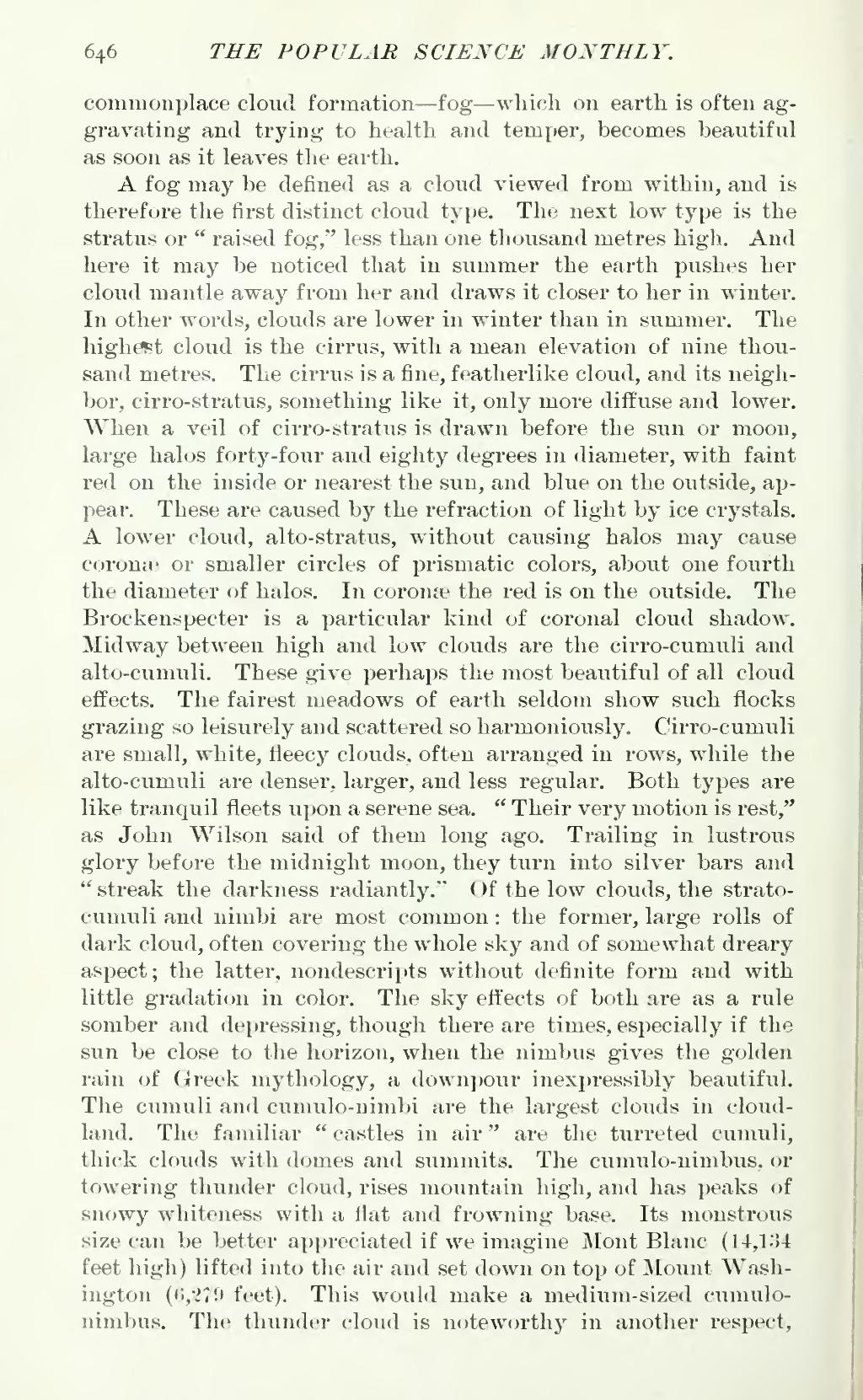commonplace cloud formation—fog—which on earth is often aggravating and trying to health and temper, becomes beautiful as soon as it leaves the earth.
A fog may be defined as a cloud viewed from within, and is therefore the first distinct cloud type. The next low type is the stratus or "raised fog," less than one thousand metres high. And here it may be noticed that in summer the earth pushes her cloud mantle away from her and draws it closer to her in winter. In other words, clouds are lower in winter than in summer. The highest cloud is the cirrus, with a mean elevation of nine thousand metres. The cirrus is a fine, featherlike cloud, and its neighbor, cirro-stratus, something like it, only more diffuse and lower. When a veil of cirro-stratus is drawn before the sun or moon, large halos forty-four and eighty degrees in diameter, with faint red on the inside or nearest the sun, and blue on the outside, appear. These are caused by the refraction of light by ice crystals. A lower cloud, alto-stratus, without causing halos may cause coronas or smaller circles of prismatic colors, about one fourth the diameter of halos. In coronæ the red is on the outside. The Brockenspecter is a particular kind of coronal cloud shadow. Midway between high and low clouds are the cirro-cumuli and alto-cumuli. These give perhaps the most beautiful of all cloud effects. The fairest meadows of earth seldom show such flocks grazing so leisurely and scattered so harmoniously. Cirro-cumuli are small, white, fleecy clouds, often arranged in rows, while the alto-cumuli are denser, larger, and less regular. Both types are like tranquil fleets upon a serene sea. "Their very motion is rest," as John Wilson said of them long ago. Trailing in lustrous glory before the midnight moon, they turn into silver bars and "streak the darkness radiantly." Of the low clouds, the stratocumuli and nimbi are most common: the former, large rolls of dark cloud, often covering the whole sky and of somewhat dreary aspect; the latter, nondescripts without definite form and with little gradation in color. The sky effects of both are as a rule somber and depressing, though there are times, especially if the sun be close to the horizon, when the nimbus gives the golden rain of Greek mythology, a downpour inexpressibly beautiful. The cumuli and cumulo-nimbi are the largest clouds in cloudland. The familiar "castles in air" are the turreted cumuli, thick clouds with domes and summits. The cumulo-nimbus, or towering thunder cloud, rises mountain high, and has peaks of snowy whiteness with a flat and frowning base. Its monstrous size can be better appreciated if we imagine Mont Blanc (14,134 feet high) lifted into the air and set down on top of Mount Washington (6,279 feet). This would make a medium-sized cumulonimbus. The thunder cloud is noteworthy in another respect,
